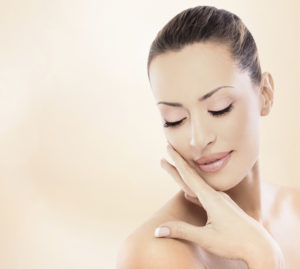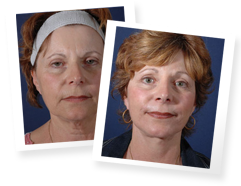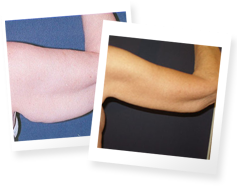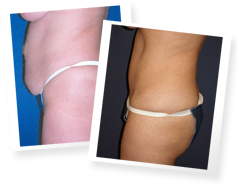 One of the age-related concerns we frequently hear from our patients is the “fallen brow.” Ideally, the brows will sit across the upper orbital rim, the bony structure above the eyelids. With age, it seems that gravity has a greater pull on these features. As the brows fall lower on the forehead, the secondary problem that occurs is heaviness on the upper eyelids. Horizontal lines may also develop on the forehead, creating further concern related to the appearance of age. Drooping brows and heavy eyelids can also give the impression of anger, unfriendliness, or fatigue.
One of the age-related concerns we frequently hear from our patients is the “fallen brow.” Ideally, the brows will sit across the upper orbital rim, the bony structure above the eyelids. With age, it seems that gravity has a greater pull on these features. As the brows fall lower on the forehead, the secondary problem that occurs is heaviness on the upper eyelids. Horizontal lines may also develop on the forehead, creating further concern related to the appearance of age. Drooping brows and heavy eyelids can also give the impression of anger, unfriendliness, or fatigue.
Historically, the upper face has been rejuvenated through a mini facelift procedure that focused on the forehead and brows. This technique may also be referred to as an upper facelift. Not every patient may need or want to go to this extent of rejuvenation, though; and they no longer have to.
Brow lifting can now be achieved with Botox, a non-surgical, minimally invasive treatment that has been around for many years now. Botox and other neuromodulators, or muscle-relaxers, are commonly used to ease the appearance of frown lines, horizontal lines, and crow’s feet.
Comparing Botox with Brow Lifting
Botox Cosmetic gained FDA approval in 2002 for use in the treatment of certain age-related cosmetic concerns. Its role in facial rejuvenation involves treating muscles beneath the skin. The muscles on the forehead and around the eyes tend to become tensed over time simply due to the daily use they get; like your core gets toned and tight thanks to all those crunches. When the muscles on the face are treated with Botox, they do not receive the nerve signals that cause contraction. As muscles relax, the skin becomes smoother and younger looking.
The way that Botox works on a drooping brow is that it relieves chronic tensing in the muscle that pulls the brow downward. As a result of this release, the upper eyelid may appear tighter so that the eyes open up to reveal a more friendly, more vibrant personality.
Brow lift surgery does not relax muscles; it removes extra skin from the upper face. Depending on the desired outcome and on the patient’s unique structure, the brow lift can also remove extra fat and tighten up the underlying muscle in order to minimize future sagging.
In many cases, a non-surgical brow lift is possible. However, it cannot be said that Botox rivals the results attained with a surgical brow lift. Consulting with an experienced plastic surgeon, you can make the determination regarding which approach may be right for you.





Comments are closed.